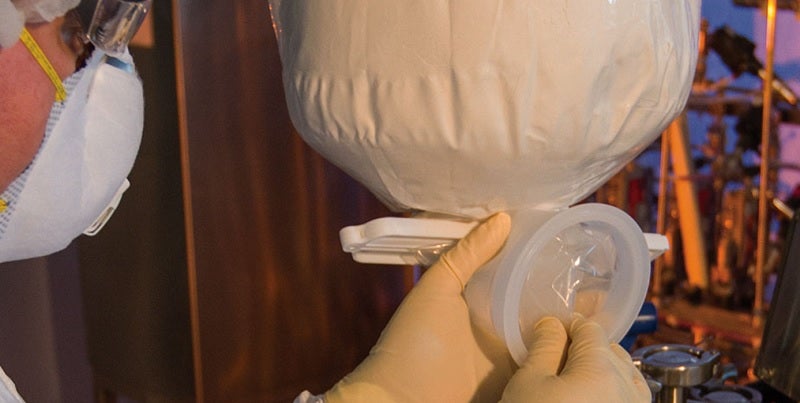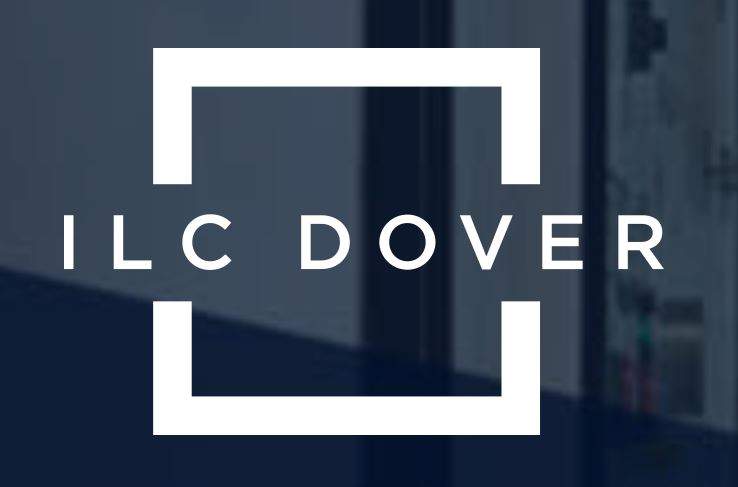
The pharmaceutical and biopharmaceutical industries are facing new challenges with powder handling on a scale that has never seen before. In recent years, production facilities across the globe have been required to handle an ever-increasing amount of powder, creating bottlenecks and inefficiencies throughout the entire product pipeline. ILC Dover is a worldwide leader in developing effective solutions for common powder handling and containment activities, producing single-use bags and systems for powder media and buffer processing, along with manufacturing high containment solutions.
In a recent webinar, we discussed the various transfer solutions for handling media and buffer powders. We looked at common challenges with powder handling, solutions, and ILC Dover products.
Common Challenges and Solutions with Powder Handling
Let us look at some of the most common problems when dealing with large volumes of powder. It is important for production facilities to really look at their processes and try to reduce their powder handling activities and labor to increase overall efficiency. Minimizing dust exposure for operator safety is a big challenge when processing large amounts of powder, so minimizing all the cleaning risks should be of the upmost importance for all companies. The possibility of automating transfer bag handling is also a reality and being able to eliminate these safety risks can be a huge step towards increased efficiency for larger companies. Another challenge is providing an effective solution to deliver powder into hydration tanks with a process that effectively eliminates clumping and floating powders thereby enhancing the mixing process. And finally, there’s the challenge of finding a solution to reduce consumables, such as cleaning wipes, tools, and auxiliary pieces for enhanced life cycle sustainability.
Why Are There Different Solutions?
You might be wondering why there are so many solutions for handling powder. This is mainly because each production facility has a multitude of processes that are custom to their own products and workflow. One of the biggest reasons you might see varying solutions are all the unique tank sizes, elevations, and layouts that each company has in their facility.
From single pilot vessels to large systems of multiple tanks, these volumes are entirely dependent on the recipes and types of media and buffers that are specific to each company’s process, so transfer solutions need to be flexible. Powders tend to have vastly different characteristics, including various flow and clumping issues, so ILC Dover’s flexible solutions can allow for a better mixing profile. Because of these ever-changing and complex issues, the industry is continuing to migrate from traditional technologies to single-use systems. Pharmaceutical and biopharmaceutical powder handling is not the same in all facilities and options are available to meet the demand as needed.
What Can be Implemented for Better Powder Handling?
One of the most common activities when handling powder is depositing media into transfer bags for further processing. It might seem like a straightforward procedure, but when you are handling large volumes of powder, sterile powder, or hazardous materials, many issues can develop if the transfer process is not properly maintained.
Dispensing is often performed in a laminar flow hood or controlled area depending on the production scale, and there are many factors in determining if your setup is optimized:
- One factor is the size of the bag opening and having a large open target for filling quickly or being able to easily adjust the weight from over filling. A large opening will help minimize any spillage.
- Another factor to consider is that funnels and platform stands are usually required for 2D transfer bags. Removing these tools would provide a more streamlined operation.
- An additional factor frequently overlooked is the bad ergonomics of most 2D transfer bags, as their height is typically too tall or too short for operators to have easy maneuvering.
- Finally, tri-clamp connections for transfer bags are typical, but they were initially designed for liquid, not powder, and so the gasket is extremely critical and can easily cause issues in the long run.
Luckily, ILC Dover has a solution for all these transfer issues.
ILC Dover’s EZ BioPac®
ILC Dover’s EZ BioPac® is a two ported 3D powder bag, and one of the fastest and most accurate ways to dispense powders into a transfer bag. The EZ BioPac® circular wall design and neck are proven to have less than 0.05% powder retention. While a one-port 2D powder bag requires a bulky support frame and filling funnel to reduce spillage during the process, the two-ported 3D powder bag is self-supported in a non-metallic filling frame with a large fill opening and inverted neck design. This feature reduces all the extra components and cleaning materials, thus creating a more efficient powder transfer process by reducing risk of contamination and resulting in more production time. It is also very ergonomic with a 40” work height on the scale that promotes safe practices for operators. Customers typically see at least a 60%-time savings when compared to 2D single ported bags.
ILC Dover Cone Liner®
Let us look at powder handling via drum charging. When doing drum charging with a drum inverter, the ILC Dover Cone Liner® eliminates cleaning of the cone and other components. We still recognize that drums are the most common way to load powders into tanks, whether it be drum dumping or scooping. The single-use Cone Liner® follows the contour of the stainless-steel cone and eliminates the need for a butterfly valve, thus increasing efficiency. Also, when used with a drum inverter system, the charge cone is not in product contact and eliminates cone cleaning when using the Cone Liner® during operation. Watch our webinar for more information about this product.
ILC Dover Jet Mixer®
Our industry has always had a fundamental challenge of efficiently transferring powder into mixing tanks. Typical hydration systems consist of multiple stainless-steel tanks within controlled areas or clean room space. In many cases, the operational ergonomics are not always easy, including height above the floor to reach the nozzle for charging powder, and congested tank top heads with minimal room to move around and stand comfortably. An additional issue is the increasing demand for large volumes of powder, and because of this, the weight restrictions on each bag of powder requires facilities to increase the number of bags needed to be transferred during production. To combat these issues, there are options such as a dense phase pneumatic platform or the rotor stator device, but each of these typical solutions all have their own issues when dealing with high volumes of powder handling.
The ILC Dover Jet Mixer® Powder Delivery System further simplifies and improves powder charging to take the burden off personnel to do manual transfers. The ILC Dover Jet Mixer® also uses the liquid from the tank as the motive for us to operate. The heart of the system being an ejector through which liquid is pumped, thus generating a vacuum which is then used to pull in a powder. However, this device has many advantages over the rotor stator device, with the prime ones including:
- No moving parts, thus reducing power consumption and maintenance
- Easy to clean in place
- Can process an extremely broad range of powders
- Allows the addition of liquid, and other media like buffers
Unlike the previous pneumatic systems, the Jet Mixer® is optimal for high containment levels, such as in API Synthesis production facilities, because it prevents powder particles from leaving the processing volume and thus protecting both operators and environment. Equally, the system also prevents other particles from entering the processing volume, thus maintaining cleanliness, quality, and enhancing the GMP capability of the powder handling operation.
Ready to Learn More?
Does your team have a need for any of these technologies in your facility? To see all these products in action, watch the full webinar: The Right Transfer Solutions for Medica and Buffer Powders.
If you have already watched the webinar and are interested in learning more about these solutions, request a quote today.


